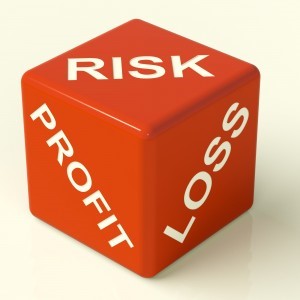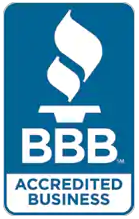Unless we time travel, foresight is blind; only hindsight is 20/20! Operating a business, we make decisions every day and accept that a certain amount of risk comes with the territory. Fortunately, as leaders we can use all our senses to get by – including common sense – so we do our best to choose smart risk over high risk. Smart business decisions are not risk-averse; they are simply choices that deliver maximum benefit with minimal exposure or liability for our organization.
Yet there are many businesses which inadvertently promote high-risk decisions as their standard operating procedure. And sometimes companies don’t realize the inherent danger, as these risky decisions may be disguised as doing things faster, cheaper, and quicker to meet important business goals or tight deadlines.
When leaders are given such directives, some may understand it to mean: “Do whatever you have to; get it done, or else!” This interpretation can open the door to unethical behavior and risky work shortcuts, such as bypassing procedures, skipping steps or improperly documenting work, finding loopholes around compliance guidelines, using questionable team practices, forgoing operational checks and balances, etc.
Business life, like our personal life, is never a long stretch of straight and uneventful road. While some routes are relatively easy to travel, business brings many ups and downs, crossroads where we must decide whether to go left or right, and sometimes unexpected hairpin curves. Every choice can be a risky decision. Luckily, with experience we learn to navigate better and make smarter decisions, so we don’t run our business off the road!
No doubt, there are times when it is necessary to take detours, or advantageous to choose a shortcut. As leaders, we can justify our decision to take that alternate route, if we see it as a necessary business risk. For example, we might accelerate our new product launch date, choosing to forego the additional 6 weeks needed to complete systems testing and employee training.
This decision, though risky, could make sense if we know that our main competitor is about to release their own breakthrough product and will gain significant competitive advantage over us should we wait. Confident in our team’s ability to push forward and make it happen, we take the chance. We tell our teams, “We know it’s not perfect, but it’s important to launch now. As soon as we get through this phase, we will fix the holes and address your concerns.” And if luck is on our side, our strategy works! Our business is none the worse for taking such a big risk. Being first to market was financially worth it.
High risk – big win! But does this mean we have now established a model for making big company decisions? Hopefully NOT!
There are two real dangers we need to consider before accepting the high-risk route as our new business standard.
- Survival
Should the initiative fall short or fail altogether, how will it affect our business and company’s future? After all, taking shortcuts can likely have poor results: a mark against our product reliability, reputation for quality, and brand ability to deliver on promises. Not to mention the loss of time, money, and other resources; the hit to market share; decreased employee morale; reduced teamwork and lower productivity due to burnout and the ensuing “blame game”, etc.
If high-risk is the norm or expected choice, company survival will always be part of the wager. So, the question becomes: Can our business survive the tangible economic hit – if we bet it all and lose?
- Integrity and Values
How important is doing the right thing? Is this “get it done at any cost” decision-process a good precedent to set for our company? Everyone should clearly understand what we are doing, and why we are taking this route on this occasion. There are real intangible costs to a company’s culture when “high-risk-high-gain” decision-making becomes a pattern for running operations or taking shortcuts and bypassing procedures becomes an unspoken and acceptable norm.
Personal and brand integrity are threatened whenever leaders and employees “just do it anyway”, and wherever people “accept it’s going to be whatever” without question. Effectively, we devalue our team’s contributions (knowledge, experience, and expertise) for which they were hired and are being paid. We demotivate employees and leaders, telling them they aren’t important to the company by silently communicating: “If you won’t or don’t do it, we’ll find someone else who will.” So, the question becomes: Is this the culture we want to be known for?
Smart Decisions – or Snap Decisions?
While the first danger can be serious, we all recognize that perfection is unrealistic. Not to mention, big risk has the potential for big bottom line returns and may be well worth it depending on the circumstances. Besides, if we are fortunate enough that our company and market-share are growing, at some point in our maturity we expect to fall short or slip a bit. And that’s not necessarily bad for us. If we have done a solid job building our reputation in the industry, engaging our teams, cultivating innovation and customer loyalty, and supporting our communities, we will rebound – and gain valuable insights from the challenges and experience.
The bigger and real threat comes when nothing bad happens in the short-term, and high-risk decision-making evolves into the company standard. At first, there may be no apparent down-side to risky behaviors. No backlash even though we didn’t address the operations issues and business challenges we purposely bypassed. “Things turned out fine in the end” and now, we need to move on to the next business opportunity. Nothing to worry about!
Well, not exactly.
Having a lucky streak (i.e. no negative consequences for risky choices) can give us a false sense of security, cause our people to become complacent, and lead us to believe our leaders and business are immune to danger – because “nothing bad has happened!”
That is – until something does!
Like the weather, Luck can -and eventually will – change. No company’s success should not be based on sheer luck alone. Or the misguided norm –“Let’s go for it no matter what!” Leaders must remember there is an opportunity cost for every decision made. Aside from the operational and market concerns, we risk losing our valuable people. Are our teams showing signs of burnout because we are constantly asking more and more of them without a real break, as one initiative quickly follows another? Are they becoming demotivated, disengaged, or less productive? Are we losing our once loyal customer base? Do we care?
There are times when high-risk is the way to go. There are also other times when it’s not in the company’s best interest. Our leaders must be encouraged to make the smartest decisions, not the quickest or easiest.
Plan to Succeed
To promote smart risk-taking in your company:
- Expect all leaders to objectively assess available information before acting.
If you are in charge, set the example by determining what actions are needed to provide the best outcome for the company at this time? Don’t exclude higher risk options from consideration, but also don’t be reactive by making knee-jerk decisions or deciding before gathering as much information as possible. Each situation is different; and effective leaders know the solution that worked yesterday, may not be the right answer should the same situation arise tomorrow. Evaluate the present circumstances on its own merits before choosing a course of action that best addresses the current need.
- Communicate the business goal, “the what, why, and how” to all employees.
Share information with all teams, at every level. Don’t assume that any single initiative will not affect another group within your company. Front-line employees are often the last to know but the first to deal with the fallout whenever something changes either internally or externally. The smallest decisions may have ripple effects – some known, others unforeseen. Regardless, change affects everyone to some degree. Loop in everyone so you are playing as one team. Garnering company-wide support and promoting teamwork is smart business.
- Collaborate and encourage inclusion at all levels.
Being inclusive provides decision-makers with better insights and more perspectives based on their employees’ knowledge, expertise, and experience. The more accurate and in-depth the information, the better the leader’s ability to make smart decisions. Collaboration helps leaders prepare strategies to eliminate foreseeable dangers and mitigate uncontrollable outcomes. That’s the smarter plan when playing high odds!
Sometimes, the smartest choice is highly risky. And that’s fine- if it’s the best choice given the circumstances. After all, there is no business without risk. As leaders, we must take the smart approach – to stack the odds in our favor as much as possible. In that way, our business wins!
Author: Julie Ramdial, President of U Learn Enterprises, Inc.







